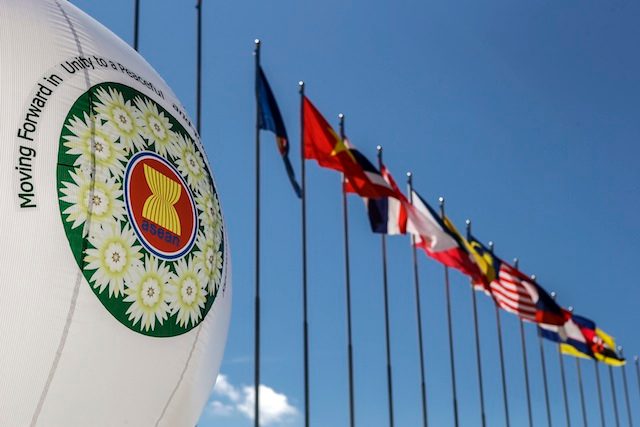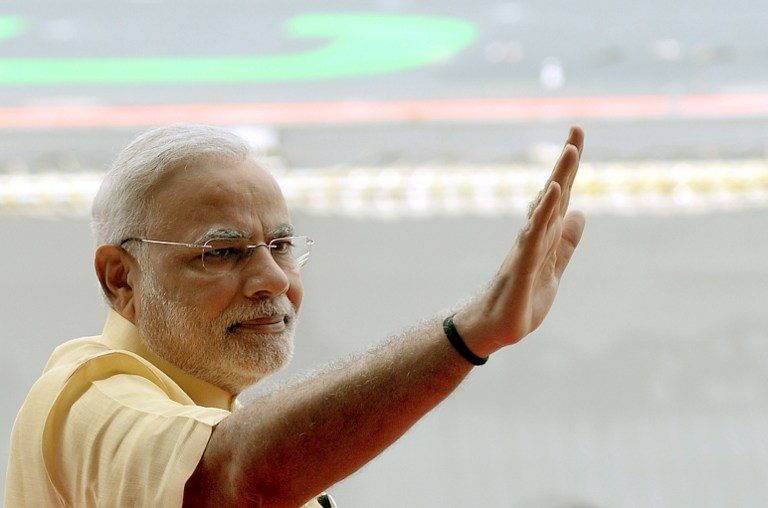SUMMARY
This is AI generated summarization, which may have errors. For context, always refer to the full article.

MANILA, Philippines – While growth prospects in the Association of Southeast Asian Nations (ASEAN) for the near future look fairly bleak, the Philippines remains a bright spot in the region, experts from Hong Kong Shanghai Bank (HSBC) said on Monday, September 14.
“From where we stand right now, we at HSBC are fairly cautious of the growth prospects for ASEAN at the moment,” HSBC ASEAN economist Su Sian Lim said in a conference call to discuss opportunities for ASEAN investors. (READ: Unlike ’97 Asian expected to bend not break)
For 2015, HSBC is projecting an overall ASEAN growth of around 4.4% which is unchanged from last year, and a slight acceleration of growth of around 5% in 2016.
Lim, however, added a caveat: “Given the immense amount of market volatility that ASEAN economies have been facing, a lot of our numbers are now under review and there are significant downside risks present.”
A growing concern, she shared, is the emerging trend from the past few quarters that the ASEAN economies’ “domestic engine” – consumer spending and business spending for investments – are starting to falter.
“It’s a puzzle as to why ASEAN consumers and businesses are not spending as interest rates across the region remain low, making credit cheap,” Lim said.
A possible explanation for this, she said, is that credit growth has been strong, and this accumulation of debt especially in Malaysia, Thailand, and Singapore has driven consumers to hit their debt ceiling.
Another trend is that nominal wage growth is starting to flatten so “even with low to moderate inflation across the region; in real terms the growth of consumer spending power is close to zero in some ASEAN countries and is starting to go negative in others,” she added.
This has a knock-on effect on how businesses respond across the region, with outlays on new investments slowing.
The faltering domestic engine also coincides with the weak external picture facing ASEAN as China’s growth slows down, along with its demand for ASEAN exports.
“The last two or 3 years have been a struggle for the region with exports having collapsed and going nowhere and the prospects not looking good, with China set to register growth in the low 7% range this year and next,” Lim said.
Philippines: ASEAN bright spot
Despite the gloomy predictions for ASEAN growth, Lim said the Philippines remains a bright spot in the region as one of the few countries in Asia that still experience robust growth.
“Growth of around 6% seems to come quite effortlessly for the Philippine economy at the moment,” she shared.
For 2015, HSBC pegs Philippine growth at 5.6% owing to the global instability, but next year it may hit 5.9% to 6%.
Compared to the rest of the region, Philippine consumption remains strong, she added, owing mostly to continued remittances from overseas Filipinos and flush liquidity conditions.
Lim shared, however, that the government’s reform push would take a backseat this year in view of the national elections in 2016.

India: Potential ASEAN growth engine
Amidst sluggish regional growth, there has been a lot of excitement over the last few years about India’s economic prospects, Lim said. As China slows, India could potentially offer ASEAN investors attractive opportunities. (READ: IMF: India, Japan to drive Asia as China slows)
HSBC forecasts India’s economic growth to expand by 7.8% despite structural challenges – a step up from the 7.4% recorded in 2014. HSBC expects the country to exceed 8% growth in 2016.
“The big difference is Prime Minister Modi’s new government is focusing the economy on attracting investment for manufacturing, personified by the ‘Make in India’ campaign, said Sanjay Bajaj, HSBC India Head of Equity Capital Markets.
Bajaj explained that a lot firms from sectors connected to manufacturing such as infrastructure, automotive, and technology, have entered India. These firms are only looking at India as a manufacturing base but are also eyeing its huge, vastly untapped domestic market.
HSBC’s assessment, he shared, is that “this is only the beginning and we will see significant investment flows continue to gather pace.”
The resurgence of India’s manufacturing industry bodes well for the region as, given the country’s size, it will help drive up demand for exports along global value chains just as China’s manufacturing sector had done over the last few years.
Amidst the current climate of volatility in global markets, investors are also beginning to see India as a relative safe haven shared Kapil Seth, HSBC India Head of Securities Services.
“India is not immune to the volatilities of the global market but it is poised to be more stable comparatively than most,” he added.
This, Seth explained, is largely because the economy is still domestically-oriented, thus less exposed to global shocks. It’s also a major importer of crude oil, so recent oil price drops have been a boost its the economy.
Foreign Portfolio Investment (FPI) has reached nearly $300 billion in India, a nearly $53-billion increase over the last 7 quarters, Seth shared.
ASEAN investors have already taken notice, especially those in Singapore. From January 2014 to June 2015, FPI from Singapore into India increased by 77%, the fastest rate of investment by any nation over this period.
The city state is among India’s top 3 sources of FPI with almost $43 billion worth of investments as of HSBC’s data from the second quarter of 2015. – Rappler.com
Add a comment
How does this make you feel?
There are no comments yet. Add your comment to start the conversation.